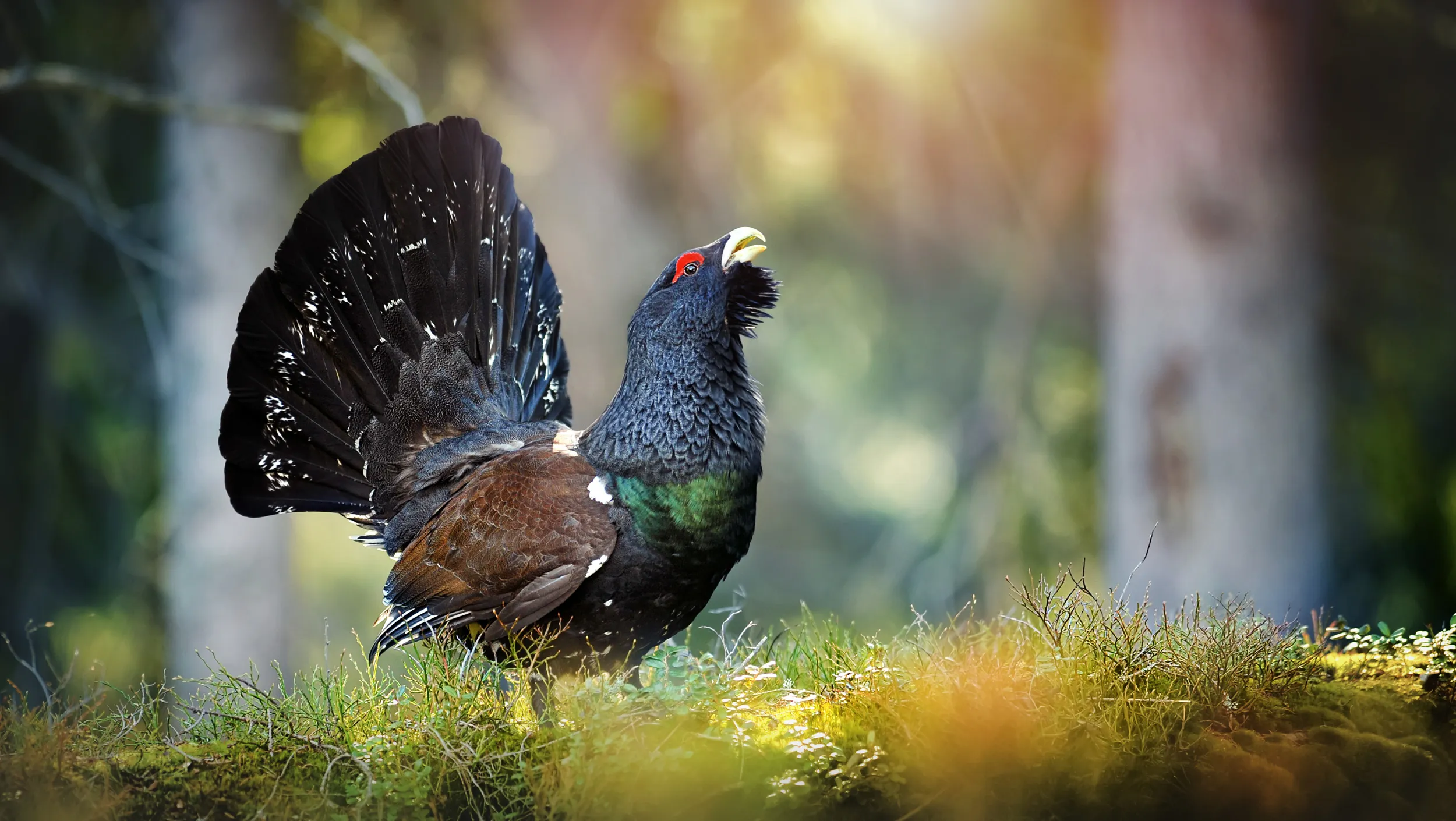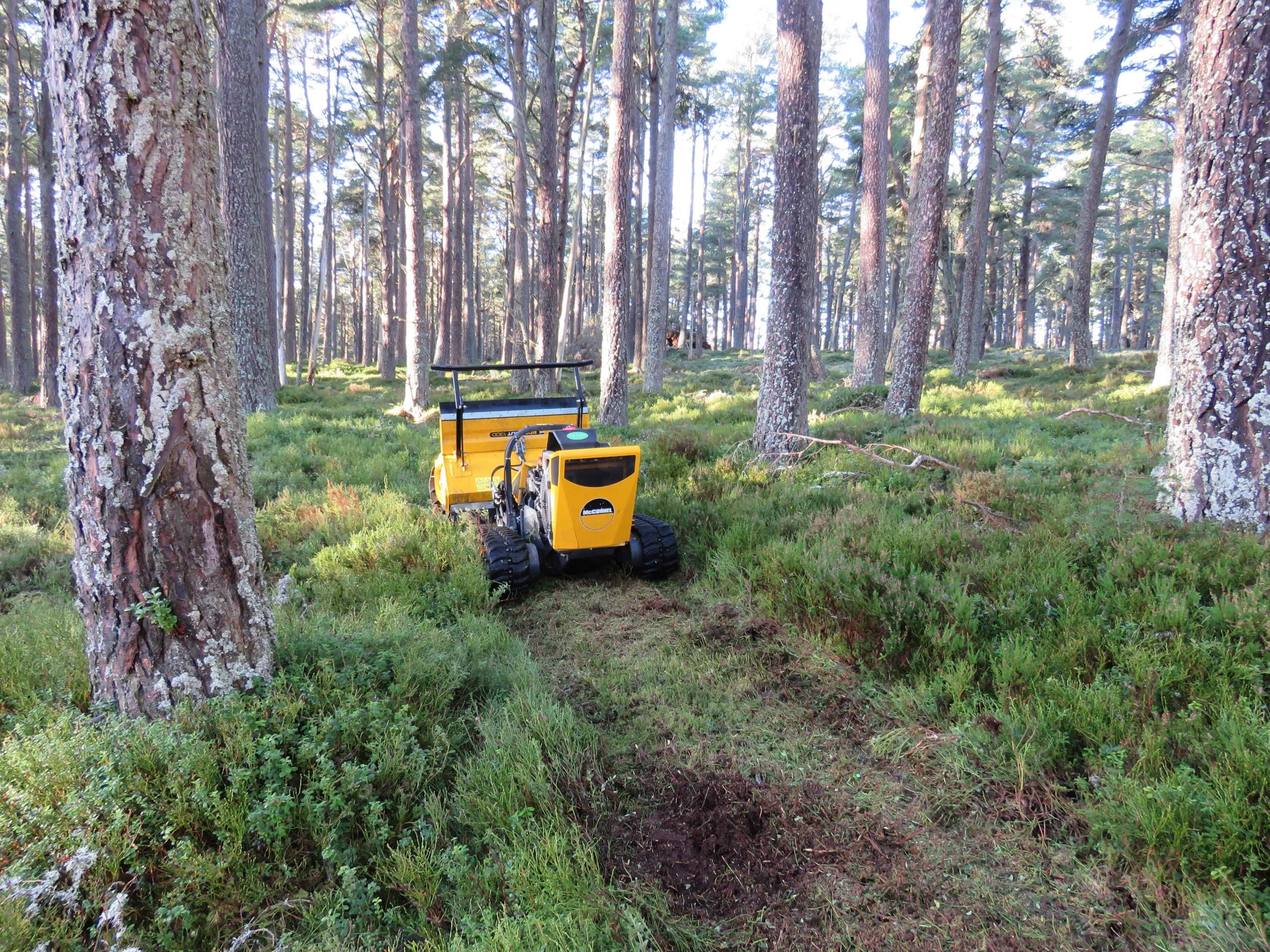
Capercaillie biodiversity action plan
Today, an estimated 532 capercaillie remain in Scotland’s fragmented pine forests.

On this page
Overview
Together with private landowners, Scottish Government and corporate support, we are working hard to reverse Capercaillie decline through conservation and advisory work.
RSPB Scotland co-ordinated the sixth national winter survey in 2021/22, joint funded by the Cairngorms Capercaillie Project, Cairngorms National Park Authority, Forestry and Land Scotland, RSPB Scotland and Scottish Forestry. This gave a population estimate of 532 birds (95% confidence interval, 227-810). This estimate is 52% lower than when the population was surveyed in 2015-16 (estimated 1114 birds) and is the lowest national estimate since these surveys began in the early 1990s. This small population is split into several isolated groups, with most of the population within the Cairngorms National Park.
This species remains at real risk of extinction from the UK and conservation action must continue. The Capercaillie is a priority species under the EU Birds Directive and thus Scotland has special duties to conserve them.
RSPB Scotland is working with several partners, including NatureScot, Forestry and Land Scotland, Cairngorms National Park Authority, Scottish Forestry and various land and forest managers to reverse this decline.
In 2021 the NatureScot Scientific Advisory Committee formed a sub-group to review the evidence and advise on further measures for the conservation and management of Capercaillie in Scotland. The report was published in February 2022 with four key areas for work.

Objectives
By employing a Capercaillie Advisory Officer and Assistant, with co-funding from NatureScot, Forestry and Land Scotland and Cairngorms Capercaillie Project (led by the Cairngorms National Park Authority) we are trying to reverse the recent declines in capercaillie. This project aims to work with all the key estates within the current capercaillie range.
Progress
- 2002-2007, Capercaillie Life Project - Funded through and EU Life Nature Project.
- 2007-onwards, Posts funded by NatureScot, Forestry and Land Scotland and RSPB Scotland to continue the work from the previous project.
- 2007-2012 onwards, Species Action Framework - Led by NatureScot.
- 2018 onwards, Cairngorms Capercaillie Project - Led by Cairngorms National Park.
Planned work
What do we plan to do next?
- Continue to work with partners, especially NatureScot, Forestry and Land Scotland and Cairngorms National Park Authority, to undertake practical measures to improve their breeding success and survival. These measures include: reducing threat posed by fences in core areas, delivering direct management on the ground, ensuring strict implementation of relevant policies and providing advice on funding opportunities to estates under the Scotland Rural Development Programme.
- Continue working with forest managers on all key sites for Capercaillie.
- Continue to undertake research and monitoring to inform conservation action.
- Increase publicity for the plight of the Capercaillie in Scotland.
- Organising regional surveys covering over 90 leks and assisting with brood counts throughout the Capercaillie range.
- Holding advisory events targeting forestry managers and estate managers.
- Researching how to minimise impacts of mammalian predators through diversionary feeding.
- Research the genetic diversity of the current Capercaillie population and trial using genetic methods to monitor populations, as part of the Cairngorms Capercaillie Project.
- Support the Cairngorms Capercaillie Project’s work with communities to create and deliver community-led actions to reduce the impact of human disturbance e.g., working with mountain bikers to re-route trails in sensitive areas.
- Continue work to improve the field layer on Abernethy reserve, using the results from the field layer management trial, which is testing the use of cattle grazing and cutting (with a Robocutter) to improve habitat conditions.
- Trial different methods to monitor Capercaillie productivity e.g., using camera traps.

What are the constraints to fully achieving the targets?
- Fragmented and isolated forests providing sub-optimal habitat.
- Deer, fencing and forestry management issues. Deer numbers remain high and there is still a problem with too much grazing and browsing on many sites.
- Cold temperatures and wet weather in June, when the chicks are small, can reduce chick survival significantly.
- Increases in generalist predators such as foxes and crows, particularly in fragmented forests, may be having a negative effect on productivity.
- Increases in human disturbance where Capercaillie habitat and popular recreation sites overlap.
Results
Capercaillie conservation is an urgent priority for RSPB Scotland. We have produced numerous management plans for Capercaillie, agreed and supported by NatureScot, Forestry and Land Scotland and Cairngorms National Park Authority, and continue to work with many managers of private forests. Action on the ground is being combined with policy advocacy. We work closely with Scottish Forestry to target government conservation funds at key areas.
RSPB research has demonstrated the problems posed by deer fencing, which causes direct mortality and grazing preventing regeneration of native pinewood. RSPB Scotland was a main partner in developing a EU Life project application for Capercaillie and was heavily involved in managing this project. This £5 million, five-year project halted the decline of the species.
The most recent national survey in winter 2021/22 gave a population estimate of 532 birds (95% confidence interval, 227-810). This is a decline of 52 percent since the previous national survey in 2015/16 when the population was estimated to be 1114 birds. Lek surveys indicate a decline over the last six years following a period of stability.

Conservation action is under way on every important site within the current Capercaillie range. However, in general, deer numbers remain high and there is still a problem with too much
grazing and browsing on many sites, with deer fences still killing birds in some areas.
As a result of the combined work of RSPB Scotland, NatureScot and Forestry and Land Scotland, there have been continued improvements to forestry policy, especially in relation to the removal and marking of fences. These will have brought direct but un-quantifiable benefits to the Capercaillie population.
Abernethy supports significant numbers of Capercaillie and is one of the most important sites for this species. Through an extensive advisory programme, large areas of improved habitat have been created in many forests through cooperation with forest managers and land owners.
Partners
RSPB Scotland has worked closely with landowners and Scottish Government over the past few years to further the conservation of Capercaillie, in particular NatureScot, Forestry and Land Scotland, Cairngorms Capercaillie Project, Cairngorms National Park Authority, Scottish Forestry and the members of the Scottish Capercaillie group.
Funding
The Capercaillie Advisory Officer and Assistant posts are jointly funded by RSPB Scotland, NatureScot, Forestry and Land Scotland and Cairngorms Capercaillie Project.
Abernethy habitat management funding - Famous Grouse, Endangered Landscapes Programme (ELP) and 100% LIFE.
